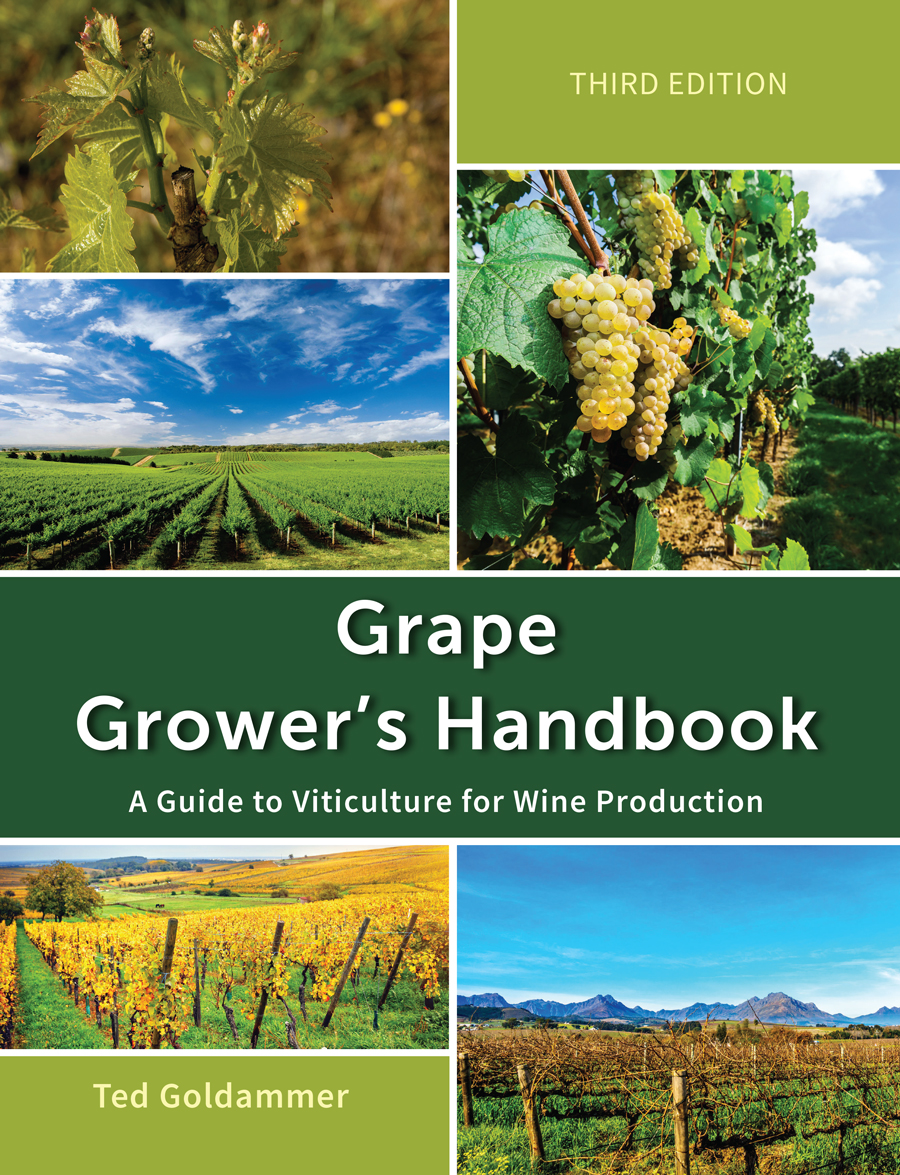Wine Grape Growing
Glossary
C
CALLUS. Parenchyma tissue that grows over a wound or graft and protects it from drying or injury.
CAMBIUM. A very thin layer of undifferentiated meristimatic tissue between the bark and the wood.
CANE. A mature woody, brown shoot as it develops after leaf fall. Canes were last year's fruiting or renewal shoots. The buds on the canes will produce this season's fruiting shoots.
CANE PRUNING. System of cutting the vine down to one or more 1-year old canes that will produce new shoots.
CANKER. A necrotic, localized disease area with a sharp line of demarcation between healthy and diseased tissue. It is usually on trunks or canes.
CANOPY. The above-ground parts of the vine, especially its leaves.
CANOPY MANAGEMENT. Viticultural techniques designed to manipulate the canopy to achieve a specific end, usually optimizing the quantity of grapes and quality of wine.
CARBOHYDRATES. Starches and sugars produced by grapevines as a means of storing energy.
CATCH WIRE. A wire that serves as a attachment point for developing grape shoots.
CATION. A positively charged ion such as calcium, magnesium, sodium, potassium, or ammonium.
CATION EXCHANGE CAPACITY (CEC). The sum total of exchangeable cations that a soil can adsorb, expressed in centimoles per kilogram of soil, used in interpreting soil test results. CHLOROSIS - Yellowing of normally green parts of the plant?shoots and leaves.
CHLOROSIS. Yellowing of normally green parts of the plant shoots and leaves.
CLONE. An example of a variety replicated using a cutting from a specific mother vine which is selected as a result of some particular attribute(s). Hence, the new vine will be genetically identical to the parent. Due to the targeted nature of the clonal reproduction, the offspring vines will carry a specific designation identifying them as clones. Within certain cultivars (such as Pinot Noir) clonal variation tends to be very important.
CLONAL SELECTION. Vineyard management term for a technique by which dead or under-performing vines are replaced with new vines grown from a single superior vine, or mother vine.
COMPATIBILITY AGENT. An adjuvant that facilitates more uniform mixing of liquid fertilizer and pesticides, or mixing of two or more pesticides in a tank mix with any liquid carrier.
COMPOST. Material produced as a result of the breakdown of organic matter by micro-organisms.
CONTACT HERBICIDE. An herbicide that kills primarily by contact with plant tissue rather than as a result of translocation; also called non-systemic. Only the portions of the plant which came into contact with the herbicide will be affected.
CORDON. An extension of the grapevine trunk usually horizontally oriented and trained along the trellis wires. Cordons are considered permanent (or perennial) wood.
COVER CROP. A cover crop is a plant which is grown (or allowed to grow) between the vine rows to provide cover for the vineyard floor. A cover crop is generally used to control weeds and to improve the soil in the vineyard.
CROP COEFFICIENT. A number that is multiplied by the potential evapotranspiration to obtain the actual crop or plant evapotranspiration. They are crop dependant numbers and change over time with the crop's growth stage.
CROP LEVEL. The number of clusters retained per shoot, per unit of cane pruning weight, or per unit canopy length.
CROP LOAD. Crop load is used to describe the ratio of yield to the pruning weight or leaf area (i.e., optimal vine balance).
CROWN GALL. A bacteria disease of the vine (usually facilitated by freeze injury to the vine's tissue).
CULTIVAR. A plant that was produced from a natural species and is maintained by cultivation. Quite often cultivar and variety are used interchangeably.
CURTAIN. A portion of the canopy composed of the current season's shoot growth.

